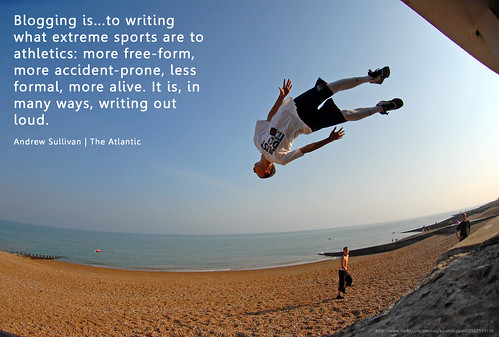ป้ายกำกับ:
blog promote,
free blog
Learning is a journey..
Wordpress, as you may already know, is a wonderful, free-to-use blogging platform. It seems that most bloggers and webmasters these days are moving to Wordpress, evident by Wordpress' ever growing popularity. Wordpress is easy to install, user friendly, and comes loaded with lots of free tools, templates and plugins.
If you don't want to bother with web hosting, buying a domain name, etc... you can simply create a free account at Wordpress.com, and start blogging away. However, if you're serious about starting your own blog and monetizing it, you should definitely install Wordpress on your own server; which is exactly what I will teach you to do in this article.
There are basically two ways to install Wordpress on your own server; the easy way, and the slightly harder way. It really just depends on the web host you sign up with and/or your own personal preferences. Before I get into the tutorial, though, I would like to talk about the benefits on installing Wordpress on your own server.
Ability to Monetize Your Blog: If you sign up for a free account with Wordpress.com, you will be able to start blogging immediately without any fuss, but you will also lose out on the opportunity to monetize your blog. At this present time, Wordpress.com does not allow any ads to be placed on their (your) blogs. This basically means that there's no way for you to earn money from your free Wordpress.com blog.
If you want to sell ad space or have affiliate links on your Wordpress blog/website, you have to sign up with a web hosting company and host it on your own domain.
Play by Your Own Rules: Wordpress.com reserves the right to delete your blog at any time for any reason. Although this is highly unlikely to occur, it's still scary to think that someone else gets to decide if your blog stays up or goes down. For example, Wordpress.com stipulates that all blogs must contain original content, so if you were planning on starting an RSS aggregation blog (a scraper site), you're out of luck. When you have your own hosting and domain, you're in control and you get to play by your rules.
Ability to Sell Your Domain: Internet investors want to buy TLD's (Top Level Domains). They don't want to buy "MyBlogsName.Wordpress.com," they want to buy "MyBlogsName.com." You might have the most popular blog on Wordpress.com, but you're going to have a hard time selling it if you ever want to.
So, now that I've gone over the benefits of installing Wordpress on your own server, lets get started with the tutorial.
The Easy Way
Step 1. Find a web hosting company that provides you with cPanel and an automated script installer, like Simple Scripts or Fantastico. If the host uses DirectAdmin instead of cPanel, that's okay as long as the plan still comes with a script installer.
Step 2. Buy a domain name. If you're having trouble finding an available domain name, I suggest using http://www.domainsbot.com.
Step 3. Login to cPanel and click on Simple Scripts, Fantastico, or whichever script installer has been provided to you. Select Wordpress and the domain that you would like to install it on. Run the installation.
Once the installation has completed, you will be provided with an auto-generated username and password, along with links to your blog's home page and admin panel. You can now login to the Wordpress admin panel and start customizing your blog. It's really that simple.
The Slightly Harder Way
If your web hosting company doesn't provide you with an automated script installer, you will need to manually install Wordpress. This is common if you're using a VPS or dedicated server. It's still very easy, though; hence, "the slightly harder way."
Step 1. Login to your server's control panel, go to your file manager, and create a new directory for your Wordpress installation. You can also install Wordpress on your root directory if you don't want to create a new one.
Step 2. Create a new MySQL database for Wordpress. You can do this using PHPMyAdmin.
Step 3. Go to http://www.wordpress.org and download/unzip the latest version of Wordpress.
Step 4. Use a text editor to open and edit the "wp-config.php" file. Change the database name, username and password to the one you just created. If you need a free text editor, I suggest Notepad++ available at http://notepad-plus.sourceforge.net/.
Step 5. Setup an FTP client. I suggest FireFTP for Firefox. It's free and it's really easy to install and use.
Step 6. Use your FTP client to upload the Wordpress files and folders to the desired directory on your server.
Step 7. Run the Wordpress installation script by going to "http://YourDomainNameHere.com/wp-admin/install.php."
That's it. You're all done.
Once you have finished installing Wordpress on your own server, I suggest visiting Wordpress.org and checking out all of the free templates and plugins available for Wordpress. Have fun!
Source article: Writing Journals and free blogging and free blog and News Blog and Online Blogger
Blog Skins
สมัครสมาชิก:
ส่งความคิดเห็น (Atom)
Blog Archive
About Me
Terms and Conditions
Privacy
Copyright 2009 Aladdin Las Vegas Hotel

0 ความคิดเห็น:
แสดงความคิดเห็น